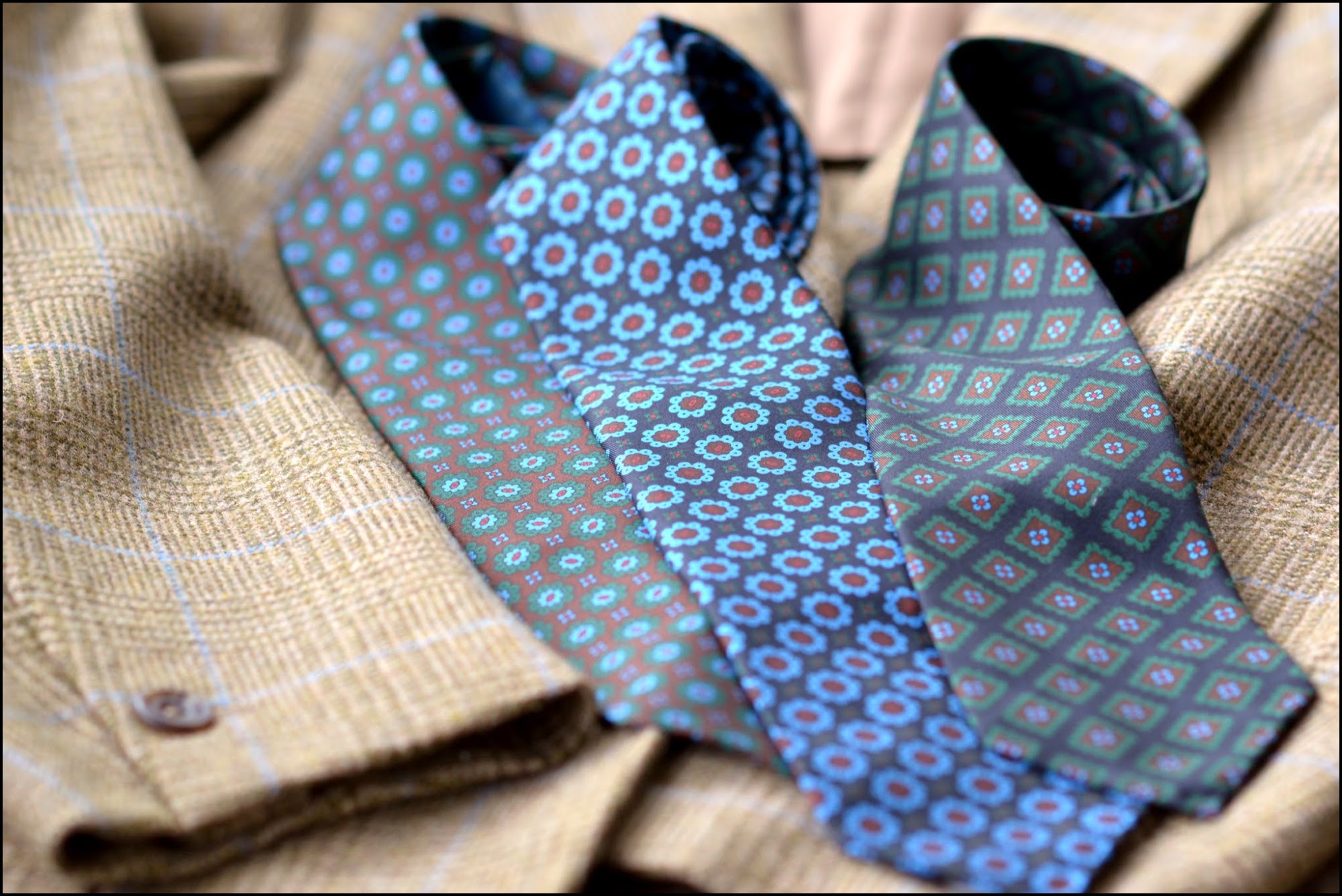About the Tie
7 Marzo 2014
As Oscar Wilde once said, "a well tied tie is the first serious step in life". But what is the "right" width of a tie today? And what about the knot?
"Una cravatta ben annodata è il primo passo serio nella vita" diceva Oscar Wilde. Ma qual è la larghezza "giusta" per una cravatta oggi? E quale nodo scegliere?
The Article - L'articolo
The tie is a fundamental accessory of the classical men’s wardrobe, strongly recommended for job interviews and unfortunately less and less requested in some companies. It comes to light as a neck warmer and becomes a usual accessory as of the XVII century. Style guides report its evolution also in the cut: initially it was cut straight and was lined with fabric, hence deteriorating soon and the knot was not easy to keep. Apparently, in 1924 the New Yorker Jesse Langsdorf, was the first to patent a 45° angle, as we know it today.
As a status symbol, since the begining of the 20th century the middle-class used to wear it to demonstrate its wealth. The regimental tie, on the other hand, used to identify members of a College or a Club, depending on its colours: for this reason, gentlemen in some Countries should pay attention before wearing it.
How wide should a tie be? And what is the right knot? Every elegant gentleman reading this article will agree that the knot depends on the fabric and composition of the tie. With the same knot, a wool tie and a silk one can look different. Four-in-hand, windsor, half-windsor and “trinity”: the web is full of photos and video tutorials of dubious and absurd knots. One thing is sure, the timeless icon Gianni Agnelli used to do a double four-in-hand knot, using just the outer loop. About the size of the knot, schools of thought here diverge again: some consider it as a creature that needs to breathe, some others prefer it to be tighter, letting the tie enlarge below it. At least, everyone agrees on the importance of the “dimples”.
As for the width, finally, we went from those big frying pans of 15cm in the 80’s to the opposite excess of 5cm ties in the 90’s. Today, fortunately, a good tie is 8 or 8,5cm wide, not more. Lined? Unlined? 3, 5, 7, 12 folds? Sad races to the highest folds are very common also here. A very elegant trend, in the humble opionion of the writer, is to wear and unlined tie, with a light and short canvas inside (not till the bottom), cut “swallow tail” and not straight, with a travetto at 24cm from the end. It is so light, it will look like a foulard!
______________________
Accessorio imprescindibile del guardaroba maschile classico, caldamente consigliata nei colloqui di lavoro e sempre meno richiesta - ahinoi – in alcune grandi aziende, la cravatta nasce come fazzoletto da collo ed ottiene asilo nel vestiario del gentiluomo solo a partire dalla seconda metà del XVII secolo. Le guide allo stile maschile raccontano di un’evoluzione anche nel taglio: inizialmente dritta e foderata con altro tessuto, si deteriorava in fretta e creava problemi con i nodi. La paternità della moderna cravatta andrebbe riconosciuta in capo al newyorkese Jesse Langsdorft, che nel 1924 fu il primo a registrare l’angolo di 45° come lo conosciamo oggi.
Status symbol già dai primi del ‘900, veniva indossata dai membri di un ceto sociale emergente, che volevano dimostrare di essere diventati abbienti. La cravatta regimental, invece, identificava in base ai suoi colori l’appartenenza ad un determinato college o club, motivo per cui, in alcuni Paesi, bisognerebbe fare sempre attenzione prima di indossarne una.
Di quanto deve essere larga la cravatta? E che tipo di nodo fare? Gli uomini eleganti alla lettura converranno sicuramente sul fatto che il tipo di nodo dipende dal materiale e dalla composizione della cravatta. A parità di nodo, una cravatta in lana ed una in seta possono dare risultati diversi. Scapino, windsor, mezzo windsor, “trinity”, il web è pieno di foto e video tutorial su nodi che oscillano tra l’osceno e il tragicomico. Una cosa è certa, l’icona senza tempo dello stile maschile, l’Avvocato Agnelli, era solito fare un nodo a “due giri”, facendo passare la cravatta solo sotto il giro più esterno. Sulla grandezza del nodo, anche qui, le scuole di pensiero divergono: c’è chi considera il nodo una “creatura che deve respirare”, c’è chi lo preferisce ben strizzato, in modo da far sfioccare la cravatta al di sotto. In compenso, tutti almeno convengono sull’effetto antiestetico di un nodo senza “fossette”.
Quanto alla larghezza, infine, siamo passati dal “padellone” di 15 cm negli anni 80 a delle sottilissime ed insignificanti cravattine da 5 cm negli anni 90. Oggi, per fortuna, è pacifico ritenere opportuna una larghezza di 8 o 8,5 cm. Foderata? Sfoderata? 3, 5, 7, 12 pieghe? Anche qui si sprecano le corse al rialzo. Un trend molto elegante è, a modesto parere di chi scrive, la cravatta sfoderata, con una leggera teletta all’interno, tagliata a coda di rondine, più corta della cravatta stessa, con travetto a 24 cm dalla punta. Così leggera che sembrerà un foulard!
Link to the article on Natural Gentleman: http://www.naturalgentleman.com/it/blog/post/la-cravatta-imprescindibile-accessorio-delleleganza-maschile/42
If you like what we are doing here, please consider following TBD on Facebook - Tumblr - Instagram - Twitter
Bespoke Hugs, Fabio
Ph. Credits: Vox Sartoria






